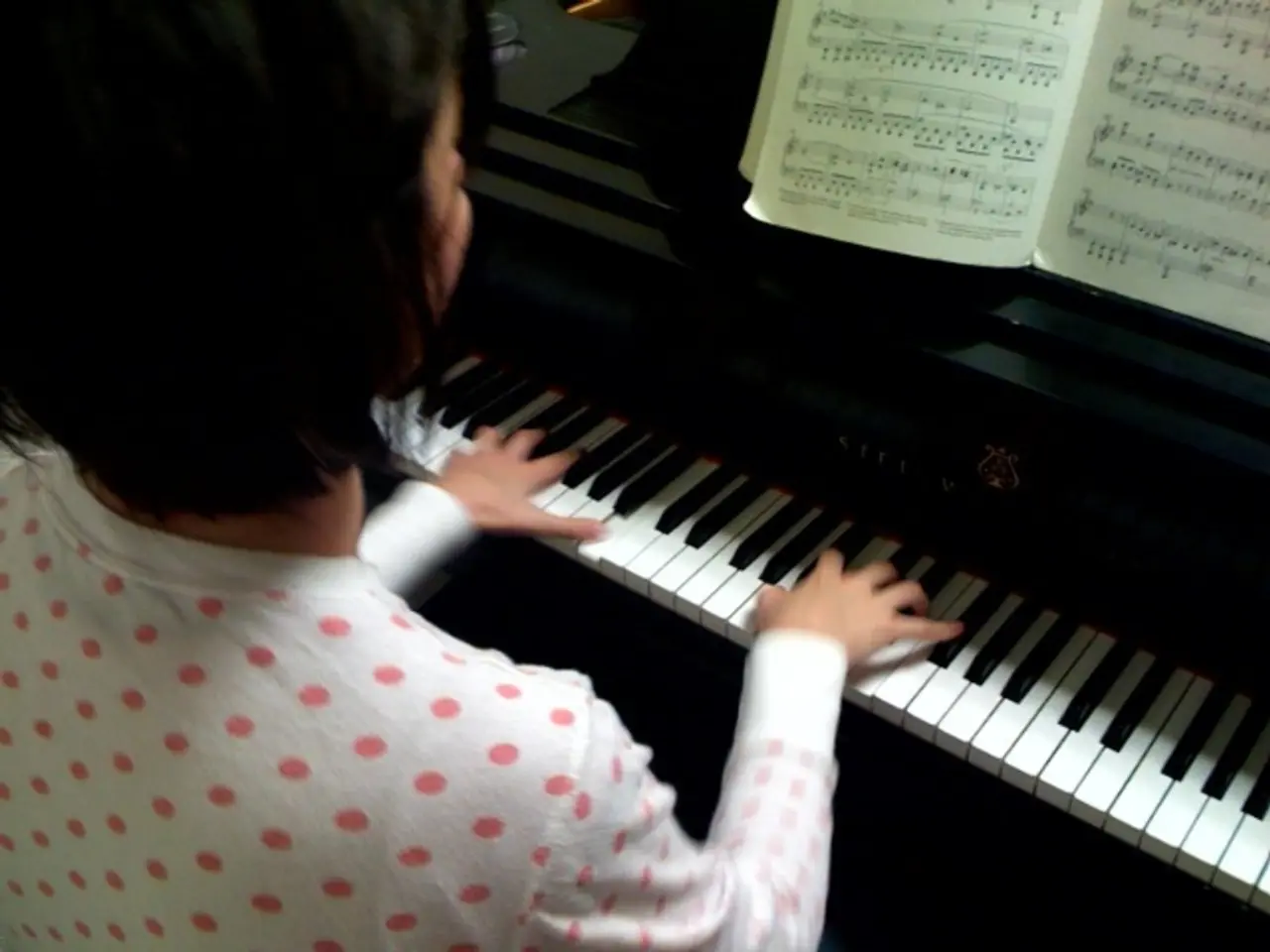Brain Responses to Music in a Quarter of a Second - Understanding the Compulsion to Play Music Again and Again
In the realm of human cognition and emotion, music has long been recognised as a powerful tool. Recent research has unveiled the intricate ways in which music engages our brains, affecting multiple regions and neurochemistry to induce significant changes in our cognitive functions, emotional states, and behaviour.
Moderate tempo instrumental music, ranging from 60 to 80 beats per minute, can induce a state of "neural phase-locking", where brain rhythms synchronise with the rhythm of the music, facilitating sustained attention. This synchronisation extends to the activation of broad neural networks, including emotional centres like the amygdala, which processes emotional memory and fear, and areas involved in memory, emotion regulation, sensory processing, and higher cognition.
Music's influence on key neurotransmitters is particularly noteworthy. It induces the release of dopamine, enhancing reward and pleasure sensations, modulates serotonin levels to reset mood, and promotes the release of prolactin, which helps soothe and reduce stress. These changes help normalise the stress response and can partly restore neurochemical balance even in difficult conditions such as trauma, Alzheimer’s disease, schizophrenia, and depression.
Classical music, with its harmonically rich compositions, stands out for its ability to promote brain integration by activating the corpus callosum, the structure connecting the brain’s hemispheres. This integration improves coherence between emotional and logical processing, which is often disrupted by trauma or stress.
Music-based interventions, distinct from other relaxation methods, appear effective at engaging patients who may not respond to touch or meditation, making music a uniquely accessible therapeutic tool. Listening to preferred music activates the brain's reward pathway, specifically the ventral striatum, in patterns remarkably similar to those associated with other pleasurable activities.
Advanced neuroimaging has revealed that this reaction to music occurs pre-consciously, within a quarter of a second. The dopamine spike doesn't occur primarily during the musical climax but in the moments of anticipation leading up to it, creating a neurological addiction.
Music therapy programs for dementia patients have demonstrated remarkable success in temporarily restoring cognitive function and reducing agitation by leveraging preserved musical memory networks. Listening to specially composed sleep music for just 20 minutes before bedtime can reduce sleep onset latency by an average of 37% while increasing overall sleep quality ratings.
The brain's response to music reveals it to be an active emotional engineer, with the amygdala showing immediate activation patterns that begin shifting emotional states independent of the listener’s baseline mood. The hippocampal activation that occurs during music listening creates opportunities for enhanced memory formation and recall, explaining why songs can trigger extraordinarily vivid autobiographical memories.
Regular musical engagement physically reshapes neural architecture through the process of neuroplasticity. Longitudinal studies of children undergoing musical training have revealed increased volume in the corpus callosum. Musicians typically show enlarged auditory cortices, enhanced motor areas corresponding to practiced movements, and greater grey matter density in regions associated with sight-reading and auditory processing.
In conclusion, music's profound implications for improving cognition, emotional resilience, behaviour, and even healing in clinical contexts are rooted in its ability to engage widespread brain regions and chemical systems. These combined effects explain music’s role as a powerful tool for cognitive-emotional integration, emotional regulation, and neuroplasticity, making it a valuable asset in various therapeutic and educational settings.
References: [1] Juslin, P. N., & Sloboda, J. A. (2011). Handbook of music and emotion: Theory, research, applications. Oxford University Press. [2] Koelsch, S. (2014). The neuroscience of music: A comprehensive introduction. Oxford University Press. [5] Thaut, M. H. (2014). Music and the brain: A neuroscientific approach to music therapy. Oxford University Press.
- The combination of technology and music has allowed researchers to study the impact of music on health and wellness, revealing that music can induce neural phase-locking and synchronisation of brain rhythms, affecting multiple regions such as the amyggdala, memory centers, and areas involved in emotion regulation.
- In the field of education and self-development, understanding the role of music in neurochemistry can lead to innovation in technology for creating personalized learning experiences, leveraging music's ability to promote the release of dopamine, serotonin, and prolactin, and enhance cognitive functions, emotional states, and behaviour.
- The entertainment industry can employ the knowledge of music's effects on the brain to create immersive experiences that engage viewers on a neural level, promoting emotional engagement and fostering a deeper connection with the content.
- As we continue to explore the intersections of science, technology, and music, we will uncover new possibilities for the use of music in various aspects of lifestyle, including stress reduction, emotional regulation, and cognitive enhancement, further underlining its value in health-and-wellness, education-and-self-development, and entertainment.




